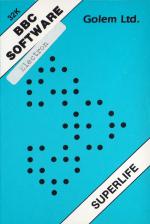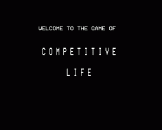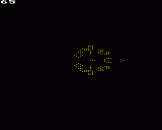Introduction
The game of Life was devised in 1970 by Professor John-Horton Conway. It is a mathematical simulation of the evolution of a colony of cells. Life is played on an infinite plane divided into finite square cells. Each cell can hold one organism and is deemed to be adjacent to eight other cells - four diagonally and four orthogonally.
The rules for deriving the next generation are:
- A mature cell with less than two mature neighbours dies of loneliness.
- A mature cell with more than two mature neighbours dies of overcrowding.
- A cell is born in an empty cell if it is adjacent to exactly three mature neighbours.
A number of strings describing the colony should be input. Each string describes a single row of the colony with any character other than spaces signifying a live organism. Empty rows are given by a string containing only spaces. The input to the colony is terminated by a null string (i.e. RETURN key only). The colony need not be large to produce interesting results - blinkers, spinners, gliders, etc.
After inputting the colony, background colour may be changed by pressing 'B', colour of cells may be changed by pressing 'C'. To start the evolution, press Space bar.
Competitive Life
See the Reds and Yellows compete for space. Two colonies of cells are input. One colony is described by pressing 'O', the other colony by pressing 'X'. After all cells are input, the background colour may be changed by pressing B, the colour of cell 'O' and 'X' may be changed by pressing O and X respectively. To start the evolution, press Space bar.
To run the programs type CHAIN "SLIFE" and CHAIN "CLIFE".
Try the following colonies. Crosses signify spaces:
row 1: *** row 1: ** row 2: ** blinker still life row 1: +* row 2: ++* row 1: +** row 3: *** row 2: ** row 3: +* glider R - pentomimo row 1: +***** row 2: *++++* row 3: +++++* row 4: ++++* spaceship row 1: +* row 2: ** row 3: +* T - tetromimo row 1: *************************** regular patterns
To finish the evolution of a colony, press Escape key.
To speed up the evolution of a colony, press Space bar.
If you do not wish to listen to music, press Space bar.
Examples of some of these and many other interesting colonies are to be found in "Scientific American" magazine in October 1970.











